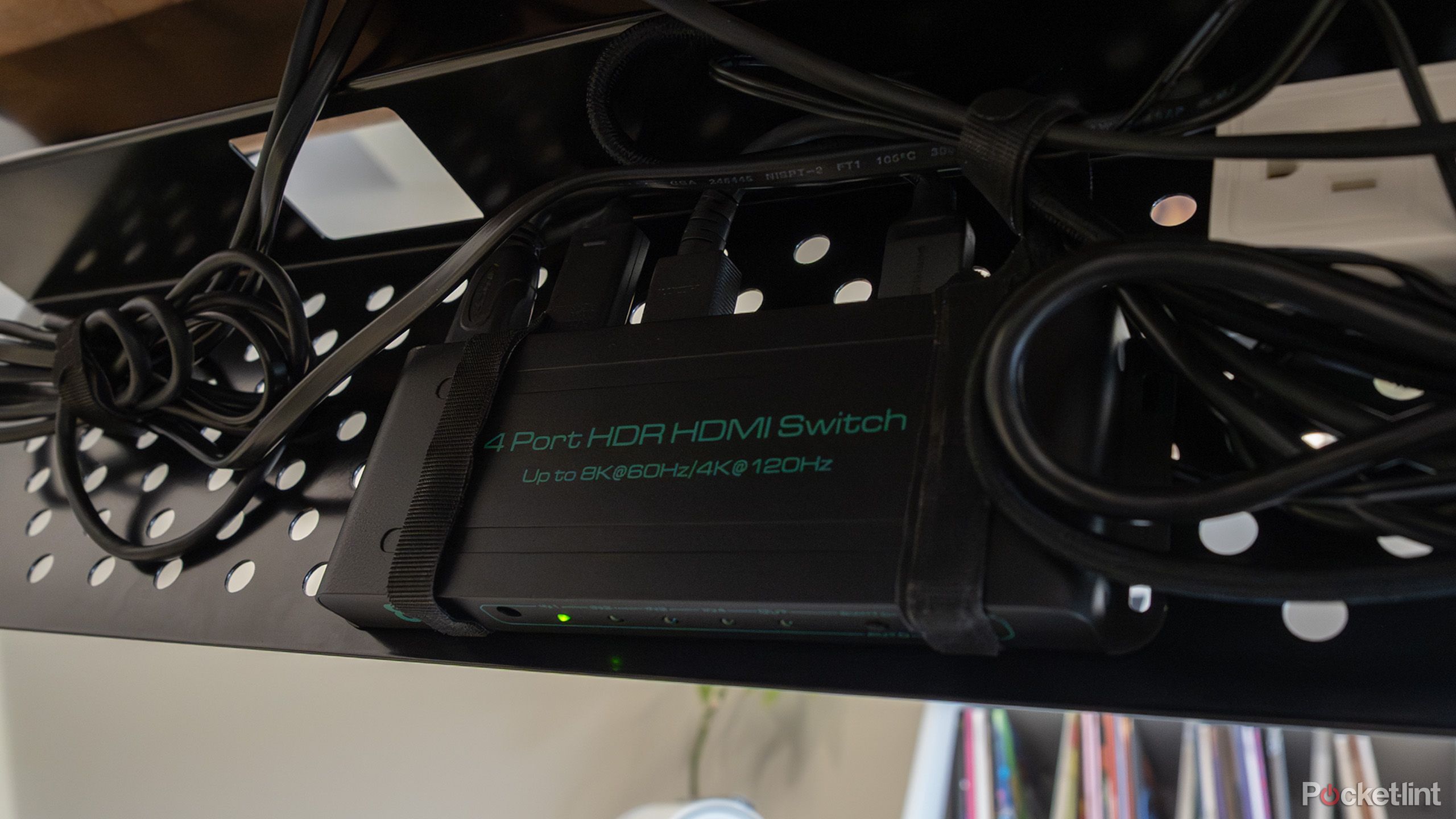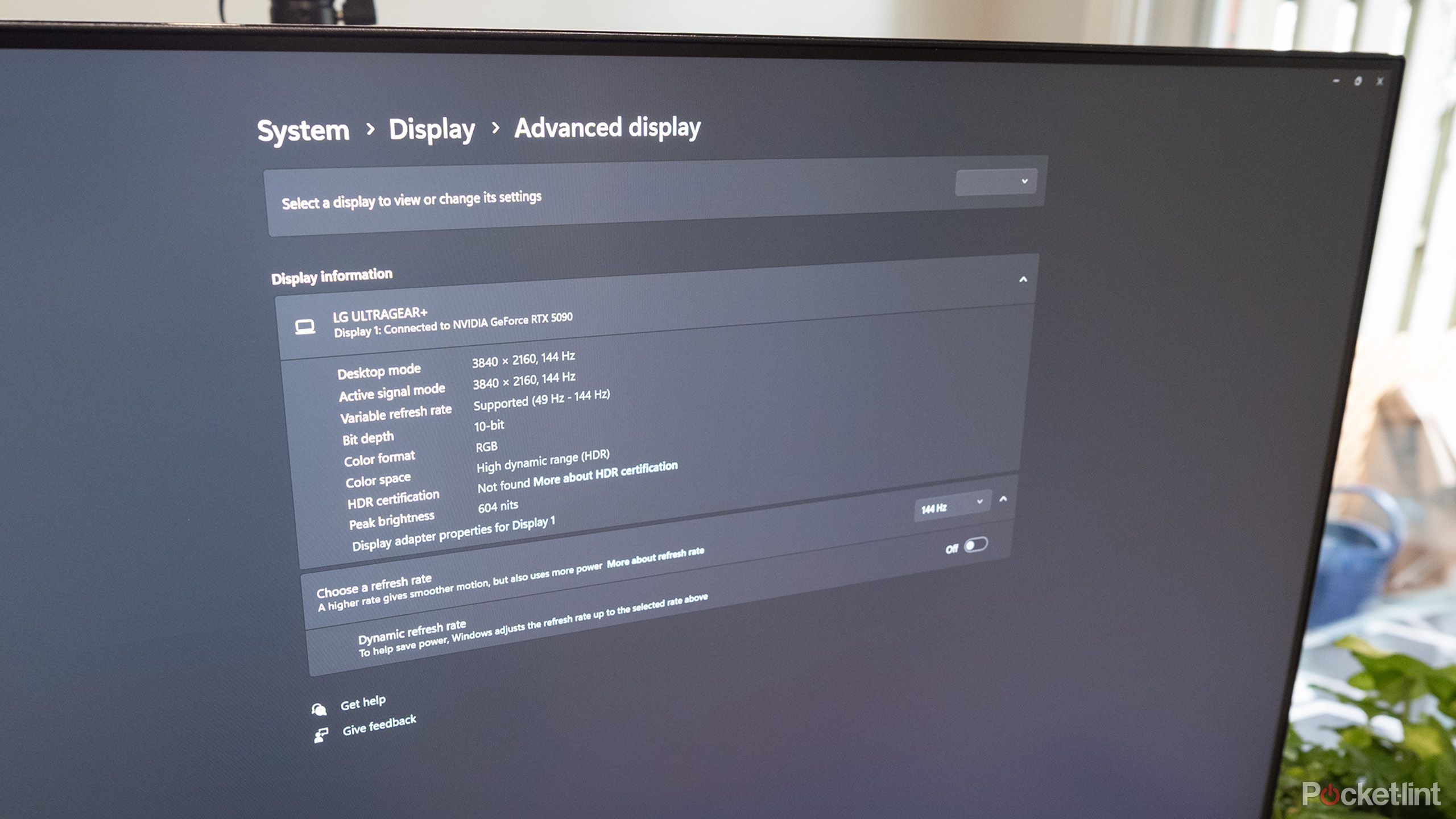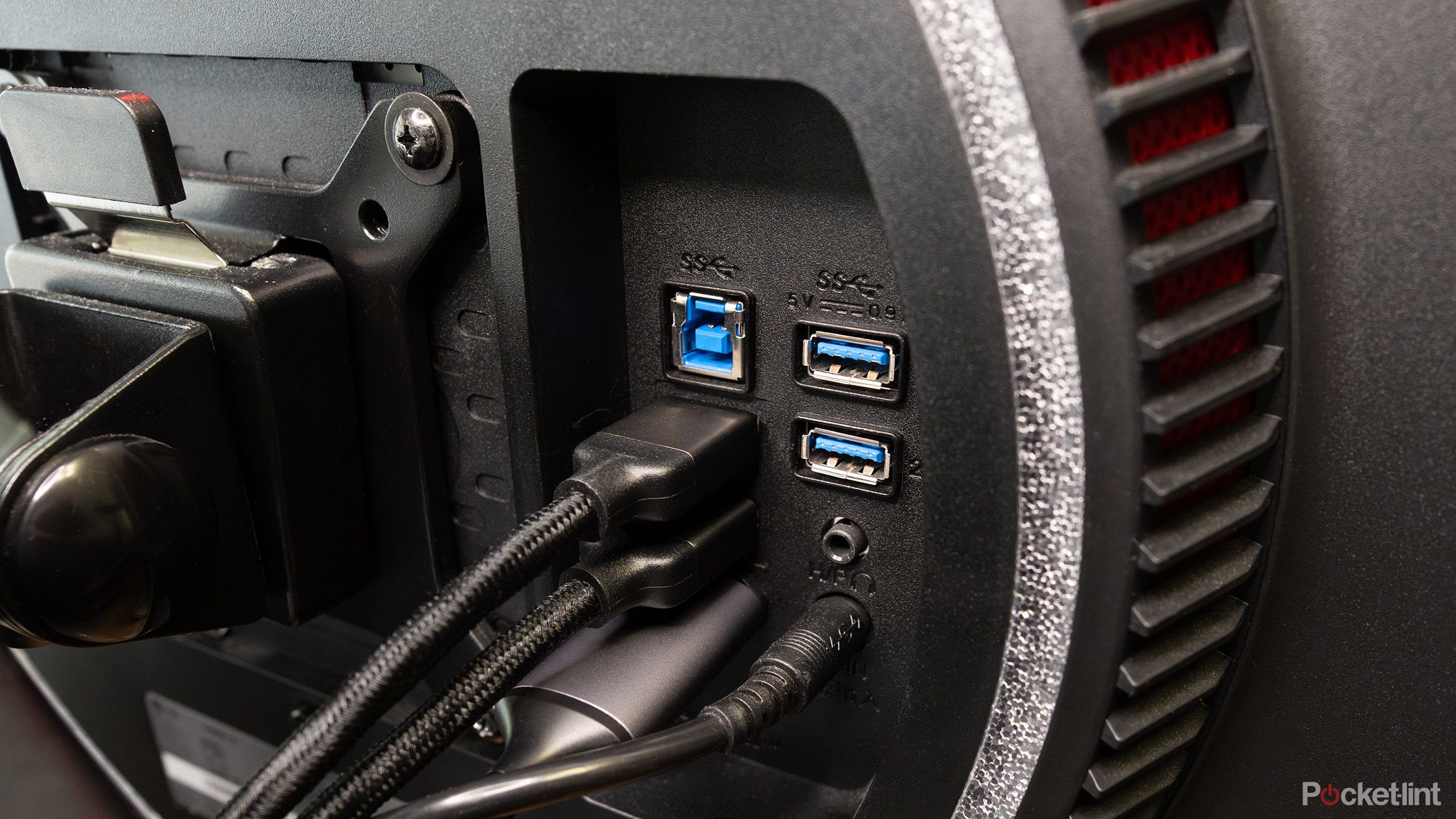Abstract
- Utilizing Extremely Excessive Velocity HDMI cables ensures compatibility with excessive refresh charges like 144Hz.
- Monitor firmware updates and navigating to particular show settings can unlock larger refresh charges like 144Hz.
- Understanding HDMI 2.1 bandwidth complexities is significant for optimum efficiency with trendy graphics playing cards.
I lately obtained my palms on a ridiculously highly effective Asus ROG G700 (2025) gaming rig geared up with Intel’s Core Extremely 7 Processor 265F and Nvidia’s GeForce RTX 5090. I am effectively conscious that that is overkill for Halo Infinite and Age of Empires IV — the 2 video games I play most continuously — however when an organization reaches out and provides you the possibility to check out a PC this highly effective, it is tough to say no.
My basement workplace setup is considerably sophisticated. I’ve a Swap OLED mannequin, a PlayStation 5 Slim, a Xbox Sequence X, and a M3 Professional Max MacBook Professional, all hooked as much as a 27-inch LG UltraGear 27GP950-B, a comparatively well-reviewed, however now discontinued monitor that dropped again in 2021. On the time, it was one of many few displays on the market that featured full bandwidth HDMI 2.1, opening the 4K 120Hz floodgates for the few supported video games on the PS5 and Xbox Sequence X (truthfully, it was largely only for Halo Infinite on the Xbox Sequence X). Assist for NVIDIA and FreeSync Premium Professional is an added bonus, too.
“Although this setup is considerably sophisticated, it is labored fairly flawlessly — at the least till now.”
To set the stage concerning my concern, it is essential to say that this monitor has a really normal variety of ports. There’s DisplayPort 1.4 — which I take advantage of with my MacBook and a USB-C-to-DisplayPort 1.4 cable to get 120Hz output to the monitor — and two HDMI 2.1 ports. For years, I’ve used one HDMI 2.1 port for my Xbox Sequence X and the opposite for an HDMI 2.1-capable switcher that my Swap OLED Mannequin and PS5 Slim are plugged into. I’ve no clue what model this HDMI switcher is, however again once I purchased it in 2020, it was one of many first out there on Amazon (it appears to have been discontinued since I can not discover it anymore).
Although this setup is considerably sophisticated, it is labored fairly flawlessly — at the least till now.
Silkland 10K 8K HDMI 2.1 Cable
This HDMI 2.1 Extremely Excessive Velocity cable from Silkland is 4K/240Hz, 144Hz 120Hz, and 8K@60Hz succesful.
- Size(s)
-
1-50ft
- Supplies/Building
-
Braided
- Capability
-
4K/240Hz 144Hz 120Hz, 8K/60Hz
- Model
-
Silkland
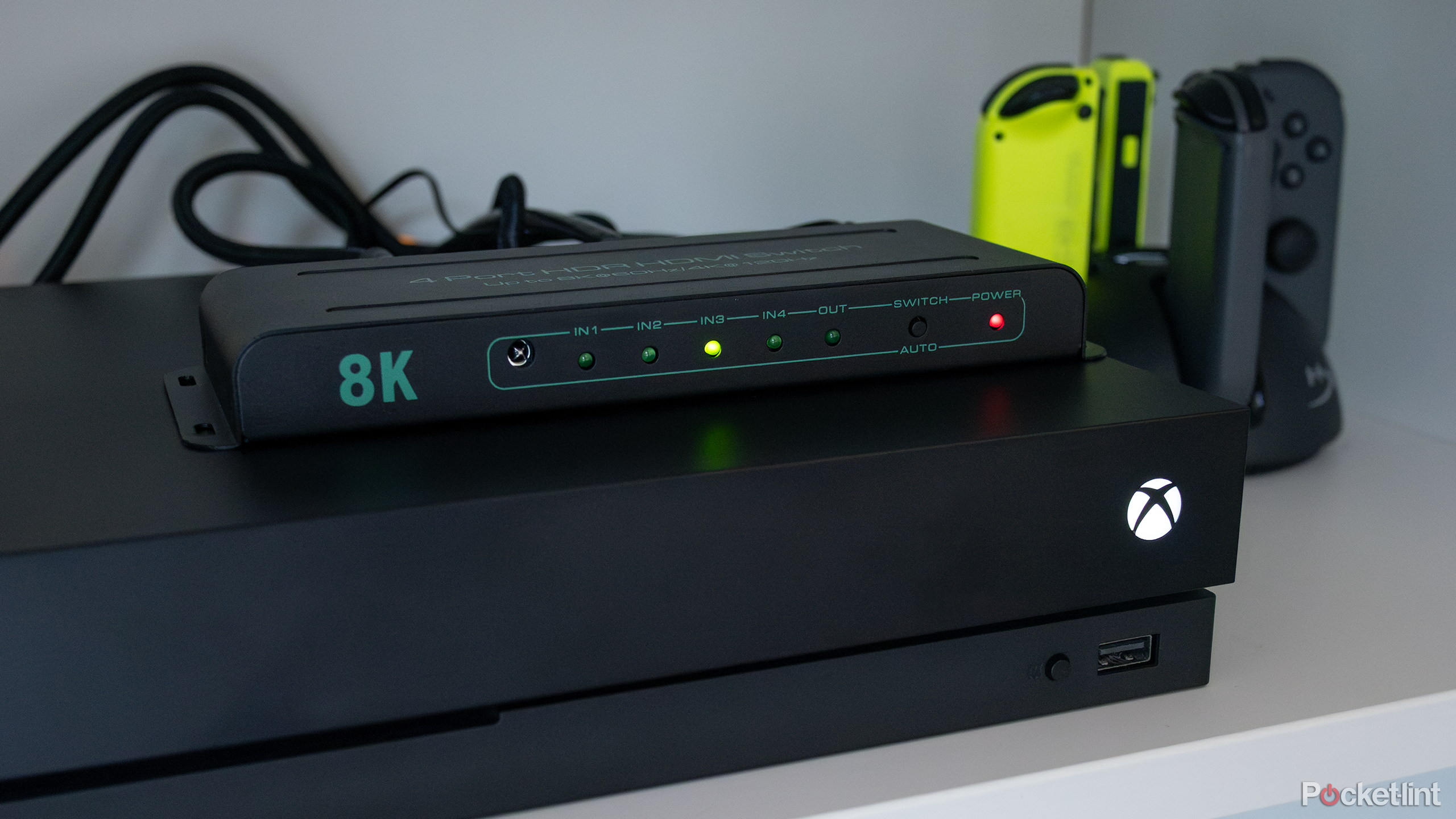
Associated
This $40 HDMI accessory saved my sanity
Who knew this tiny, comparatively low cost system might resolve all of my TV connection woes?
Should you’re on the lookout for a dependable HDMI 2.1 cable that is additionally reasonably priced, Silkland’s 10K 8K HDMI 2.1 Cable is a superb possibility (I personal roughly 8 at this level).
HDMI remains to be a complicated mess
Larger bandwidth cables make issues much more sophisticated
I rapidly decided that plugging the Asus ROG G700 (2025) into my HDMI 2.1 switcher can be the best answer to my downside. Nevertheless, no matter what I attempted, I could not work out a method to get my 144Hz-capable (160Hz in the event you overclock it and use show stream compression) monitor to push previous 120Hz over HDMI 2.1, regardless of the port format supporting the 48Gbps bandwidth switch. I might navigate to Superior beneath Show Settings and 120Hz remained the one possibility.
“The ROG Astral RTX 5090 is among the first graphics playing cards to characteristic two HDMI 2.1 ports.”
This is the place I attempted just a few issues. I hooked the Asus ROG G700 (2025) up by means of Show Port 1.4 to see if the 144Hz possibility appeared in Home windows 11’s Superior Show Settings. Fortunately, it did. I then tried a unique HDMI cable after noticing the one I used to be utilizing did not say “Extremely Excessive Velocity” on it and as an alternative was labelled “Excessive Velocity.” HDMI 2.0 10.2Gbps Excessive Velocity cables can hit 4K/30Hz (there’s additionally HDMI 2.0a and HDMI 2.0b that assist 18Gbps — these are typically referred to as Premium Excessive Velocity HDMI cables), whereas 48Gbps Extremely Excessive Velocity cables can attain a most of 8K/60Hz and 4K/120Hz/144Hz. I additionally ensured the HDMI cable operating out of the switcher was Extremely Excessive Velocity suitable. Confused but? I don’t blame you.
Sadly, this nonetheless did not resolve the difficulty. At this level, my subsequent guess was that the HDMI switcher was by some means the supply of my woes, so I grabbed the HDMI 2.1 switcher I’ve been using in my living room. Whereas this one labored, 144Hz nonetheless did not present up as an possibility. My guess is that almost all switchers can solely deal with 120Hz and never 144Hz, regardless of technically being able to supporting the bandwidth. This is sensible given HDMI 2.1 144Hz is comparatively new within the PC house, and the ROG Astral RTX 5090 is among the first graphics playing cards to characteristic two HDMI 2.1 ports.
The following step was to skip the switcher and plug the ROG G700 (2025) straight into my monitor’s HDMI 2.1 port. Sadly, the 144Hz possibility nonetheless did not seem in Home windows 11. Does HDMI 2.1 simply not assist 144Hz? Are all of the Reddit threads I learn over the previous a number of hours simply solely improper?
Earlier than you scroll right down to the feedback to inform me that DisplayPort 1.4 is healthier than HDMI 2.1 and that I should not be making an attempt to do that in any respect, the previous port possibility with a USB-C-to-DisplayPort-1.4 cable is the one straightforward method to get my MacBook Professional to hook up with an exterior monitor at 120Hz. You will get it to work over HDMI 2.1, but it surely’s a very complicated process.
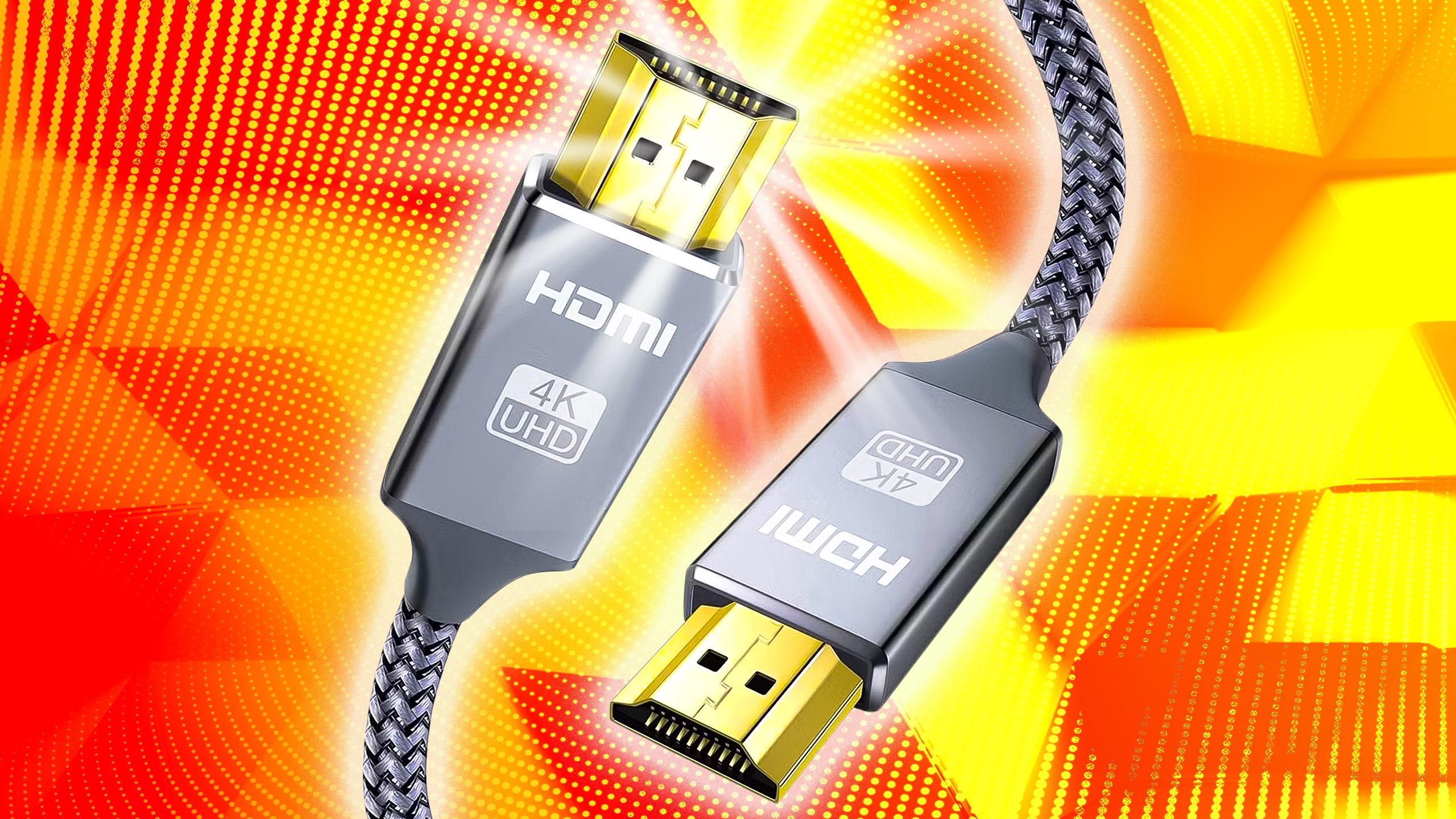
Associated
I can’t believe no one is talking about this massive HDMI problem
With so many gadgets, TVs are struggling to maintain up with the HDMI downside.
Be sure your monitor is up to date and at all times use Extremely Excessive Velocity cables
Welcome to the wild work of HDMI 2.1
It seems that I wanted to replace my monitor through a USB-B cable by means of LG’s OnScreen app so as to add 144Hz HDMI 2.1 compatibility. Subsequent, I navigated to the UltraGear 27GP950-B’s Settings and chosen Basic. Then I scrolled previous the primary row of choices to get to HDMI Extremely HD Deep Colour and chosen the 144Hz possibility. Like magic, the flexibility to set the monitor to 144Hz appeared in Home windows 11’s Superior Show Settings. Why is that this setting listed as being associated to paint and never refresh price? I’ve no clue. My
55-inch Hisense U8H
has an identical setting for its one HDMI 2.1/120Hz port.
So what have I realized from this expertise? First, I am at all times going to verify my monitor is updated with the newest firmware. On prime of that, once I’m coping with high-bandwidth resolutions and refresh charges like 144Hz/4K, I now know it is essential to double-check what kind of HDMI cable I am utilizing and to solely follow Extremely Excessive Velocity cables. You’ll be able to often determine these cables by the Extremely Excessive Velocity label on them alongside the 8K (they’re usually braided, too).
Hopefully, this convoluted journey by means of the world of HDMI and excessive refresh charges helped you out not directly. Within the coming weeks, I am going to have extra on Pocket-lint about my return to PC gaming and the Asus ROG G700 (2025).

Associated
Is the Galaxy S25 Edge really worth $1,100? I went hands-on and here are my thoughts
The primary skinny cellphone has arrived, however does it stay as much as the hype?
Trending Merchandise

Lenovo New 15.6″ Laptop, Intel Pentium 4-core Processor, 40GB Memory, 2TB PCIe SSD, 15.6″ FHD Anti-Glare Display, Ethernet Port, HDMI, USB-C, WiFi & Bluetooth, Webcam, Windows 11 Home

Thermaltake V250 Motherboard Sync ARGB ATX Mid-Tower Chassis with 3 120mm 5V Addressable RGB Fan + 1 Black 120mm Rear Fan Pre-Put in CA-1Q5-00M1WN-00

Sceptre Curved 24-inch Gaming Monitor 1080p R1500 98% sRGB HDMI x2 VGA Build-in Speakers, VESA Wall Mount Machine Black (C248W-1920RN Series)

HP 27h Full HD Monitor – Diagonal – IPS Panel & 75Hz Refresh Rate – Smooth Screen – 3-Sided Micro-Edge Bezel – 100mm Height/Tilt Adjust – Built-in Dual Speakers – for Hybrid Workers,Black

Wireless Keyboard and Mouse Combo – Full-Sized Ergonomic Keyboard with Wrist Rest, Phone Holder, Sleep Mode, Silent 2.4GHz Cordless Keyboard Mouse Combo for Computer, Laptop, PC, Mac, Windows -Trueque

ASUS 27 Inch Monitor – 1080P, IPS, Full HD, Frameless, 100Hz, 1ms, Adaptive-Sync, for Working and Gaming, Low Blue Gentle, Flicker Free, HDMI, VESA Mountable, Tilt – VA27EHF,Black



